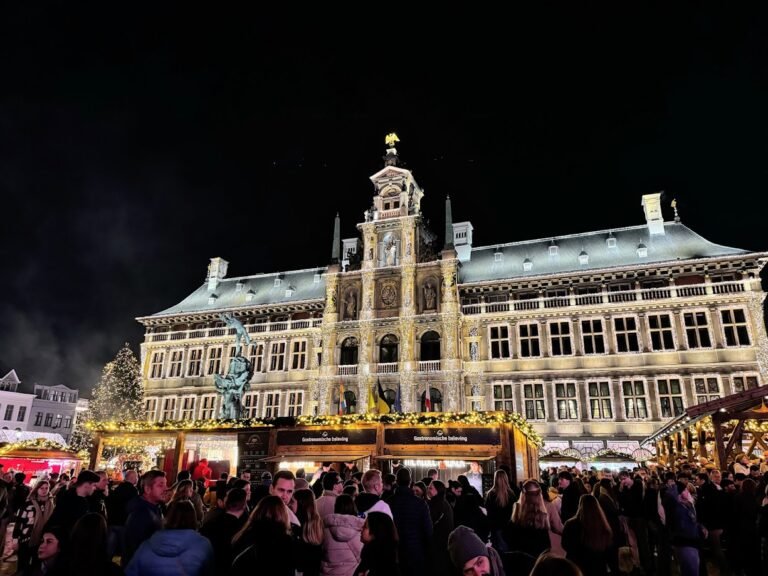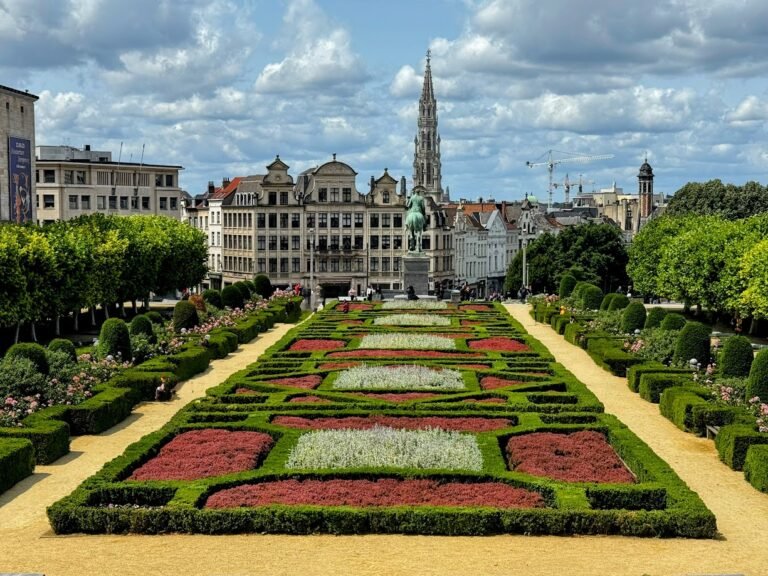Iceland is like no place on Earth. From volcanic landscapes colliding with glaciers to erupting geysers and majestic waterfalls, the land of fire and ice should be on everyone’s bucket list. There is no shortage of amazing sites to see and ways to explore. This was my second visit here and I was just as amazed and captivated!
Practicalities
To drive or not to drive?
A popular option is to drive the entire coastline or Ring Road (approximately 3,100 miles). For those with less time, you can just base yourself in Reykjavik and take organised day trips.
We opted to self-drive for the flexibility of being on our own timetable and seeing some sights not included on the packaged tours. We were only here for 4 full days, so couldn’t drive the full ring road, but we did manage to squeeze in the following jam-packed itinerary.
Getting to Reykjavik
Reykjavik is a short 3-hour flight from London with multiple daily departures. We went for the budget EasyJet option, just taking what would fit in our cabin approved backpack! (This ended up being more than sufficient). We took a very early morning flight and reserved a rental car from the airport in advance. On arrival, it was a very quick process of picking up the car and heading off for an early start to our adventure!
If you’re not driving, you can pre-book a taxi or use the Flybus Airport Transfer that runs every 35-45 minutes and goes to the major hotels and Reykjavik bus terminal. Prices are about £24 a ticket. For an even cheaper option there’s the Public Bus (Route 55) for about £14/$81/€16. However, this is less frequent and requires a transfer in Hafnarfjörður.
E-Sim/Internet
Make sure your mobile provider works in Iceland, or I would recommend purchasing an E-sim before you arrive. Airalo is a great option and has some very affordable short stay plans. We found it essential to have mobile data for maps and locating nearby gas stations and grocery stores.
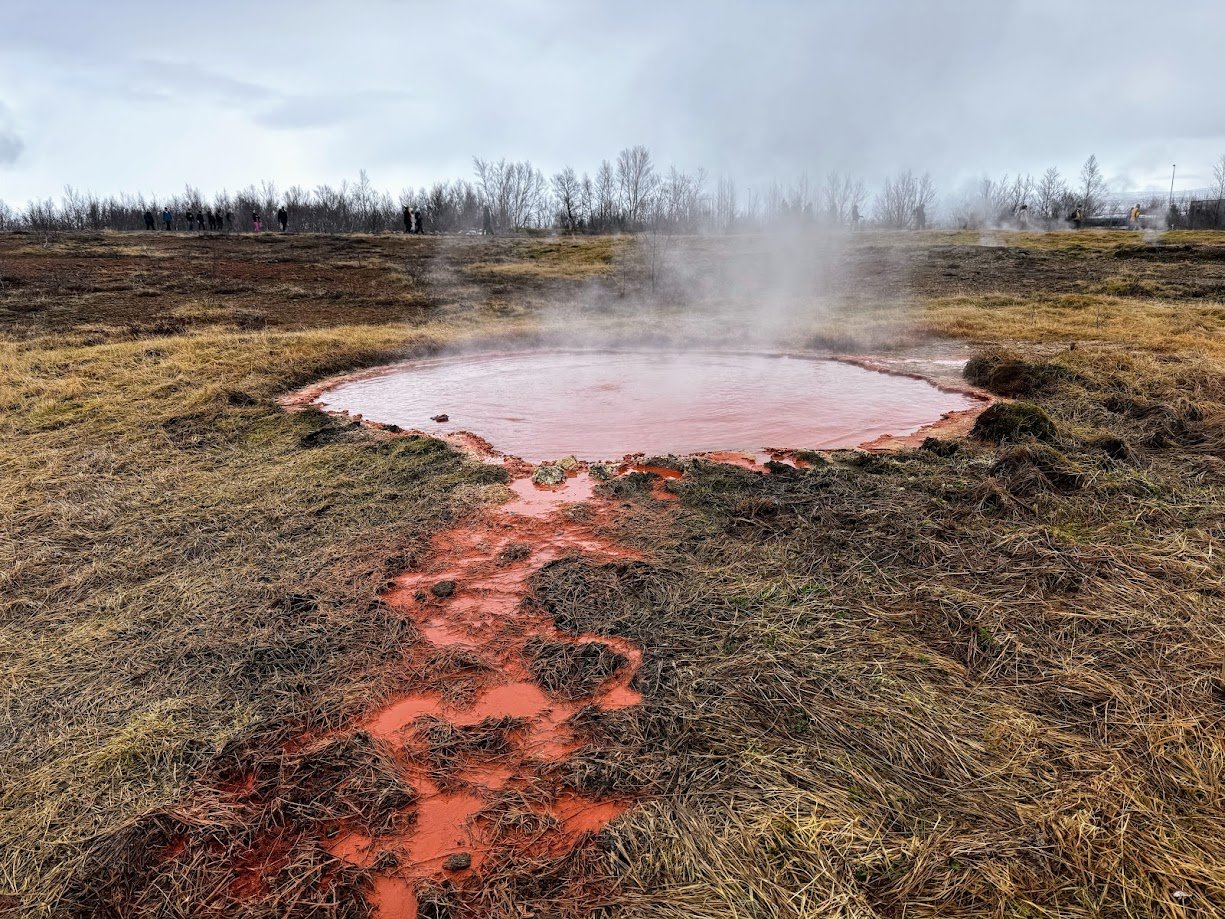
Parking
In Reykjavik there is street parking and some designated parking lots. Parking and fees is done by Zone, with Zone 1 being in the middle of the city and Zone 2 a bit further out. Parking fees are usually in place from 9am-6pm on weekdays and 10am–2pm on Saturdays with Sunday being free. I would try and park in Zone 2 and use a parking app like Parka to pay.
Most tourist sites will charge about £5 (900ISK) for parking with no time limit. You can pay using the same parking app or at one of the kiosks. The larger sites will also have restaurants, souvenir shops, and toilets.
Grocery Shopping and Alcohol
Our trip was about seeing as much as possible, rather than the food scene, so we decided to make all our meals to save money. There are several grocery stores including Bónus, Krónan and Nettó to name a few.
We made a packed lunch everyday which meant we needed plastic wrap, foil or sandwich bags. I would suggest bringing some of these items with you, to avoid buying an entire roll. Bringing a packed lunch not only saved costs, but also time. We would just eat lunch in the car at one of our stops and then go. Given it was pretty cold outside, the food stayed fresh too!
If you want to buy alcohol in Iceland there is literally only one place you can buy it from – a state-owned store called Vinbúðin. Be mindful it’s closed on Sundays. They are generally located near one of the big grocery stores. In hindsight, we should have bought the wine at the airport duty-free, as apparently, it’s slightly cheaper there!
Prices at bars or restaurants are pretty steep. That being said we did enjoy a delicious Icelandic beer when we popped in to my guilty pleasure, Hard Rock Café.
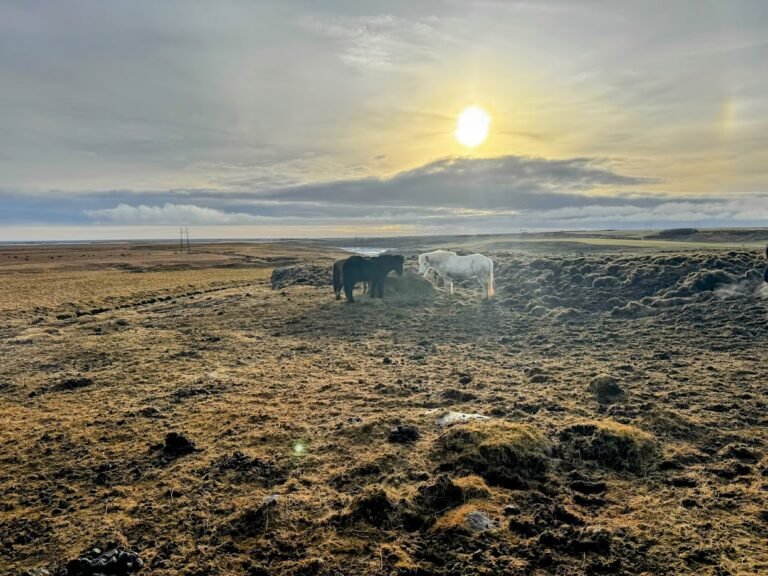
Where to Stay
Iceland is not budget friendly, but planning ahead and staying in places where you can cook your own meals definitely helps cut costs. We spent 4 days and 3 nights in Iceland, staying the first night in Reykjavik and the 2nd and 3rd nights farther out in a small village called Hella, in between Sellfoss and Vik on the Ring Road.
With only one night in Reykjavik, we wanted to stay as close to the city centre as possible in order to maximize our time. I absolutely loved where we stayed! It was a 3-min walk from Hallgrimskirkja and had plentiful street parking nearby. The flat had everything we needed and was incredibly cosy. It was just a shame we didn’t have longer here!
Reykjavík Yellow Door Apartment (Booking.com)
We stayed in this really cosy cabin near Hella for the next two nights, as it meant we were closer to the sites we had planned to see. The cabin was very new and beautifully decorated. Being further out meant we also had a greater chance to see the Northern Lights but unfortunately seeing them wasn’t in the cards for us this trip.
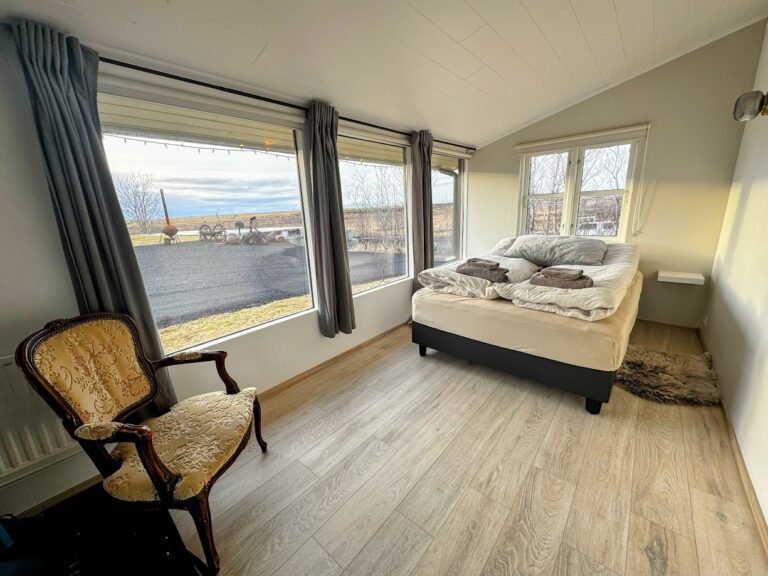
Blue Lagoon
While it is super touristy, that does not make the Blue Lagoon any less incredible. It’s only 20 mins from the airport so people tend to make it their first stop or last stop of their trip.
We went for the first option. It was a nice way to start our Iceland adventure after a very early morning flight. You do need to pre-book and there are a few packages to choose from. We chose the comfort package which included access to the agoon, one Silica mud mask, one towel and one drink.
When you check in you get a bracelet with a chip linked to your reservation. This scans you in,, gets you access to a locker,, and is also checks your drink entitlement at the swim up bar.
The lockers are big so plenty of space to leave your clothes and bags. Once in your swimsuit, you’ll need to have a quick shower to remove any dirt and oils from your body, before entering the the lagoon. If you opt for the comfort package you won’t get a robe. It is cold outside, but you get in pretty much straight away so not having a robe was no issue!
We spent about 2 hours here enjoying the warm water, free drink, and our “beautifying” silica mud mask.. You can spend as long as you like, but I felt 2 hours was just the right amount of time to soak, relax and unwind.
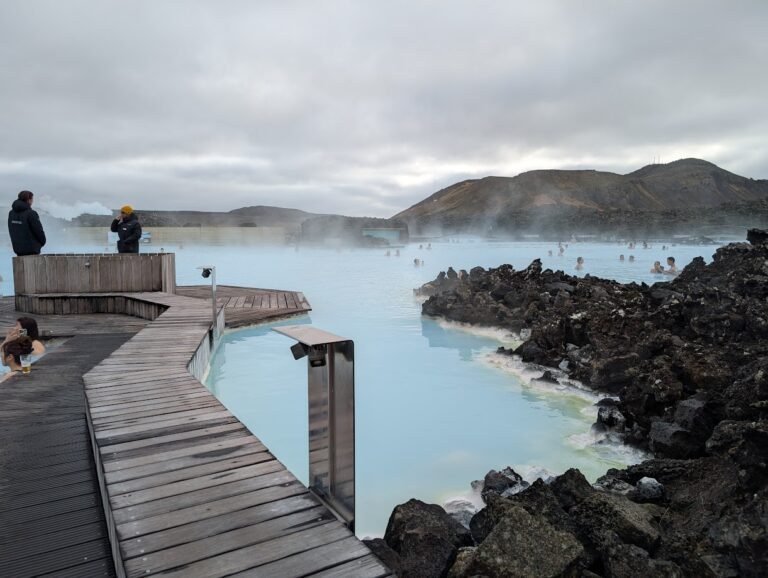
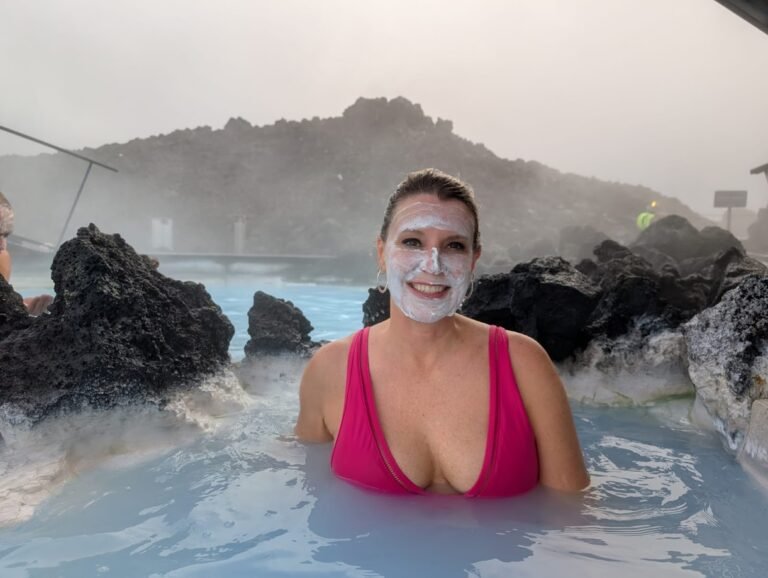
Reykjavik
This northernmost capital of the world is your landing spot on arrival to Iceland. Approximately 65% of Icelanders live in or around the Reykjavik area, which sounds a lot, but when the country only has 375k people in total, it’s very small in comparison to other capital cities.
Reykjavik is a colourful and vibrant city that embraces modern Nordic design and is recognized as one of the world’s leading sustainable urban centres. It’s a beautiful place to walk around and explore the sights and the street art culture. There are some really incredible wall murals found throughout the old town where previously unauthorized graffiti has become a celebrated urban art movement.
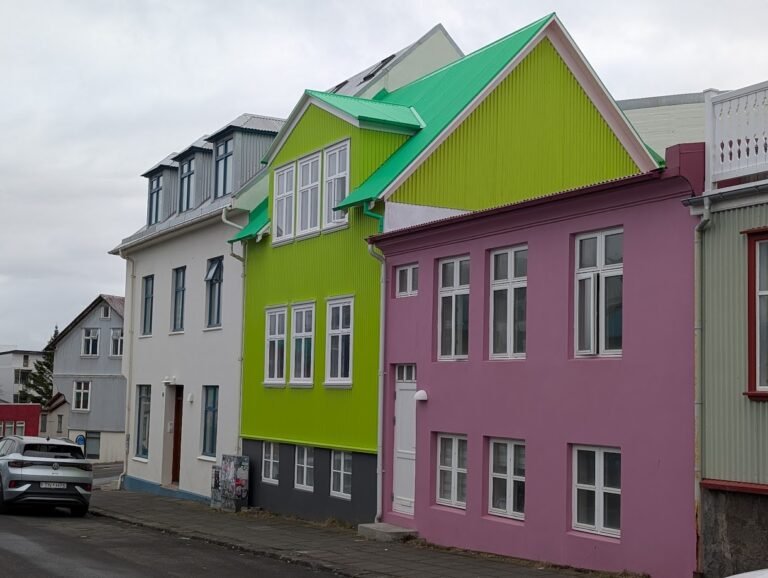
Hallgrímskirkja
Hallgrímskirkja Church is unmissable as it’s the tallest building in the city at approximately 74.5 m (244 ft) tall. The design of this church is quite interesting as it was inspired by the natural landscape of the country, with the stepped design resembling the basalt columns found in volcanic formations. It’s free to visit, but there is a small fee to take the elevator to the observation deck for some spectacular 360-degree views of the city (weather depending!).
If you walk towards the water you will see the beautiful Harpa Concert Hall and further along the harbour will be Sun Voyager (Sólfar), which is a gleaming steel sculpture resembling a Viking ship.
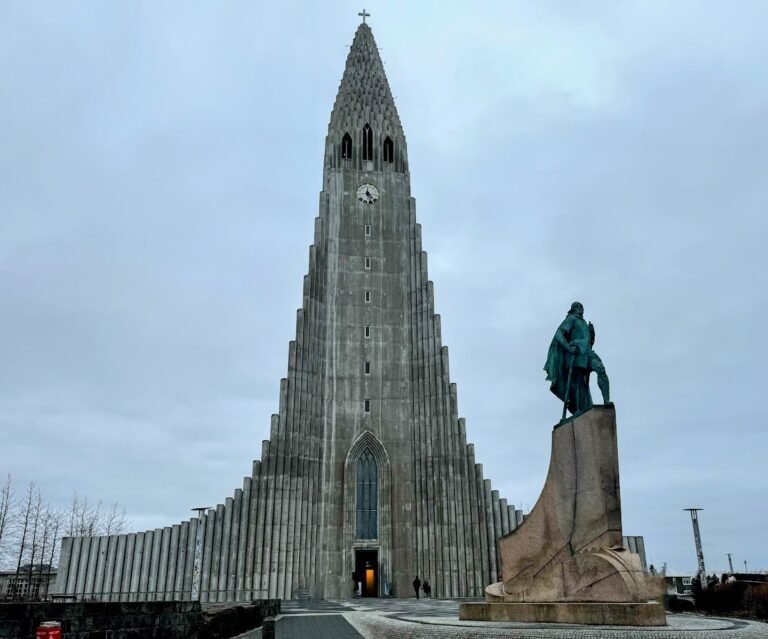
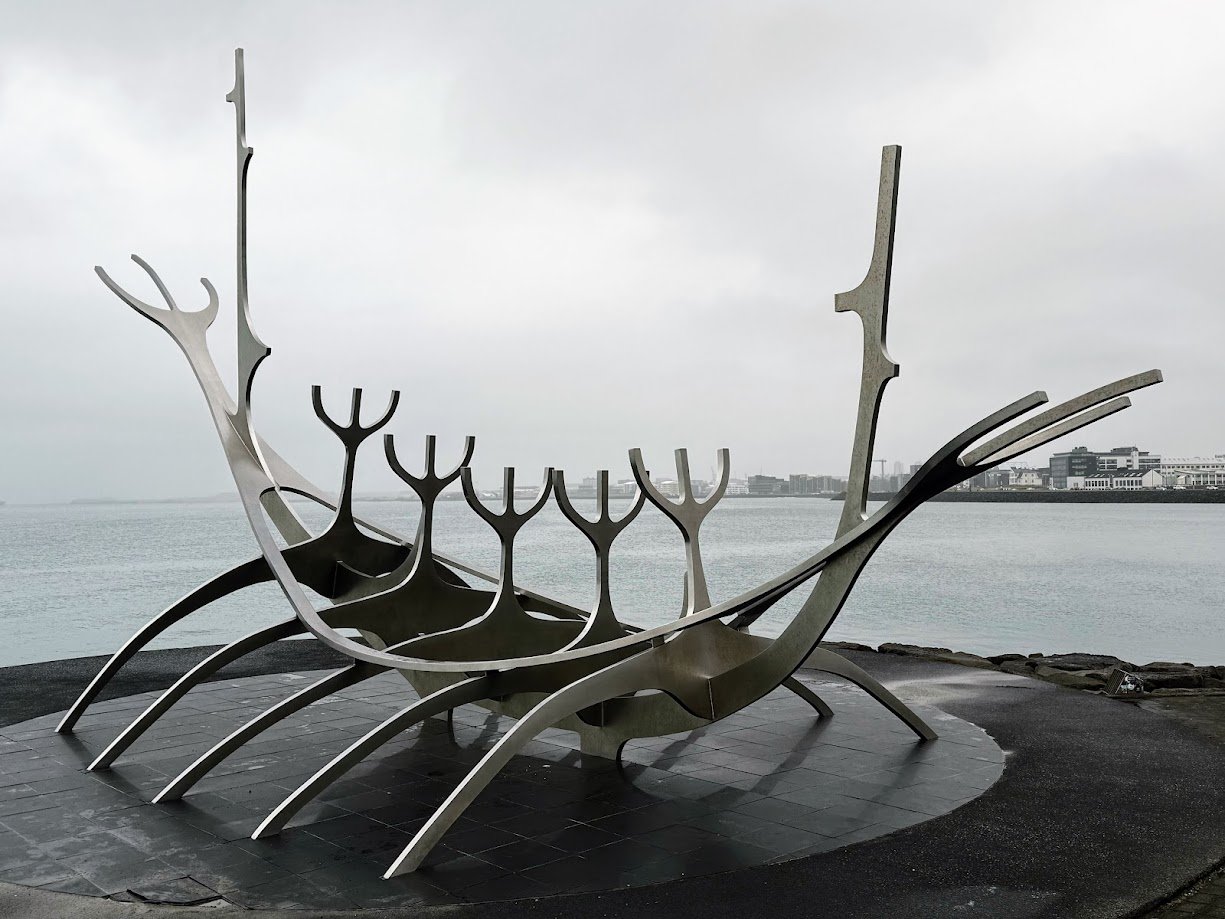
Rainbow street
The most instagrammable spot in the city is most certainly Rainbow Street. This street runs from downtown all the way to Hallgrímskirkja Church, painted with the colours of the rainbow to celebrate Pride in 2019. It’s a great photo opportunity standing on the colourful street with the iconic church in the background.
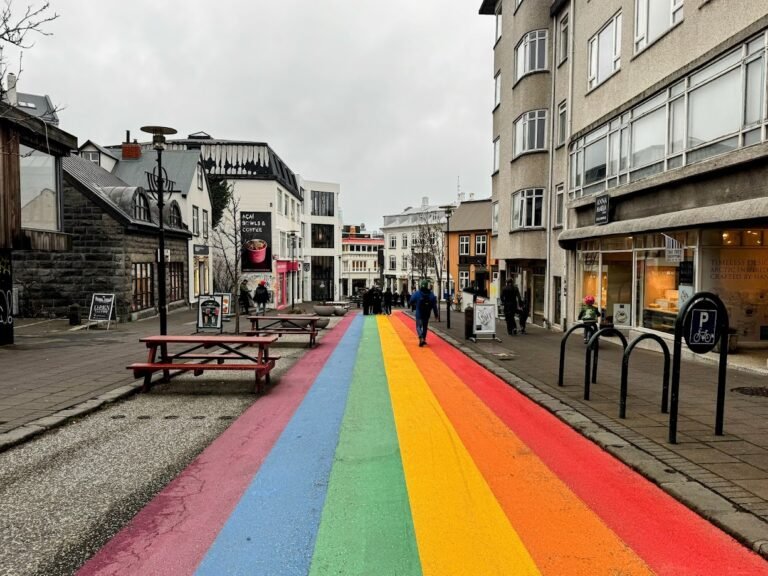
City walking tour
I highly recommend the free walking tour of the city that starts in front of the old Parliament building. It’s about 2 hours long and covers all the main attractions in downtown. The guides are really informative and provide some really helpful and historical information about the city and country. We even got to hear a traditional Icelandic song from our guide!
Golden Circle
This is one of the most popular things to do in Iceland, and an essential part of your itinerary. The golden circle is a 186 mile circular route. There are three main stops along the way, which would be included in a pre-booked tour, but if driving you can add in a few less touristy sites too.
1. Þingvellir (Thingvellir) National Park
This was our first stop. It’s the site of Iceland’s first parliament and is also located between the North American and Eurasian tectonic plates. There are some beautiful hiking trails and amazing scenery to take in.
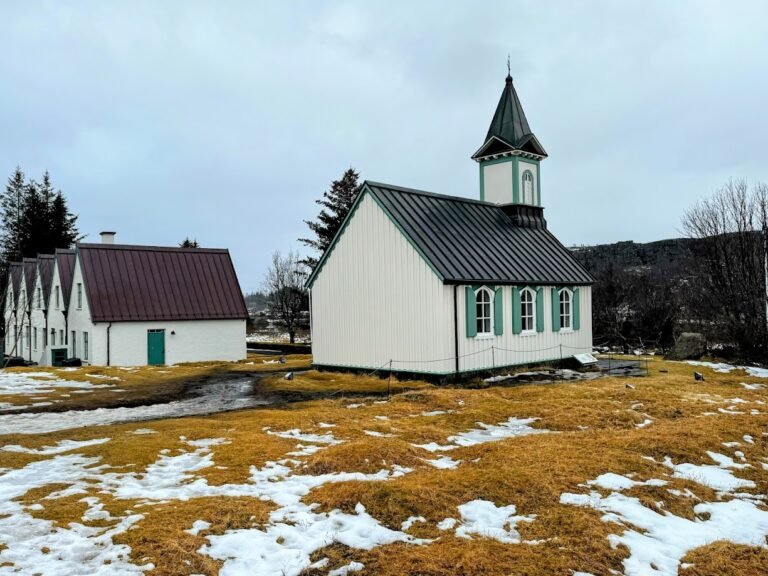
Silfra fissure snorkelling
If you’re feeling adventurous, you can actually swim in the cold waters through the Silfra fissure. Although considered one of the coldest dive sites globally, with near freezing waters (2-4°C /35-39°F), the snorkelling here was actually very enjoyable. The reason for this is the dry suit. I kept all my clothes on and even added another layer provided by the tour company. The dry suit includes boots and covers everything except your face and hands.
You feel a bit like a seal once fully suited up. You do get gloves to wear, but your hands will get wet and cold. Our guides let us know that if we just used our hands to guide ourselves rather than trying to swim, they wouldn’t get as cold, and they were right. There is a current that moves you along but you also have flippers to help.
Does your hair get wet? Yes! So for those with longer hair, you may want to braid it. I ended up with wet hair for quite a while after. The actual swim takes about 30 mins floating in just about the clearest water you will ever see. It’s like swimming between cracks in the earth and was completely surreal. A bonus is the water is super clean, so if you get some in your snorkel, just drink it!
Despite being skeptical at first, I enjoyed it way more than I thought I would, and what an opportunity to be diving in an area that sits between two tectonic plates.
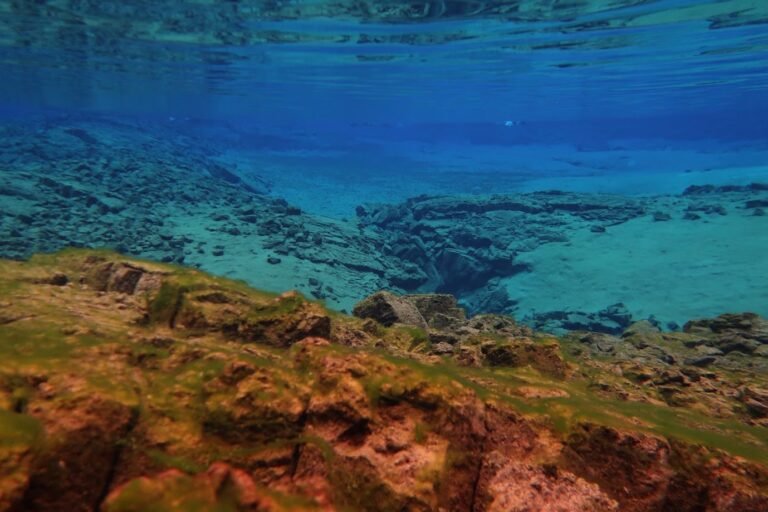
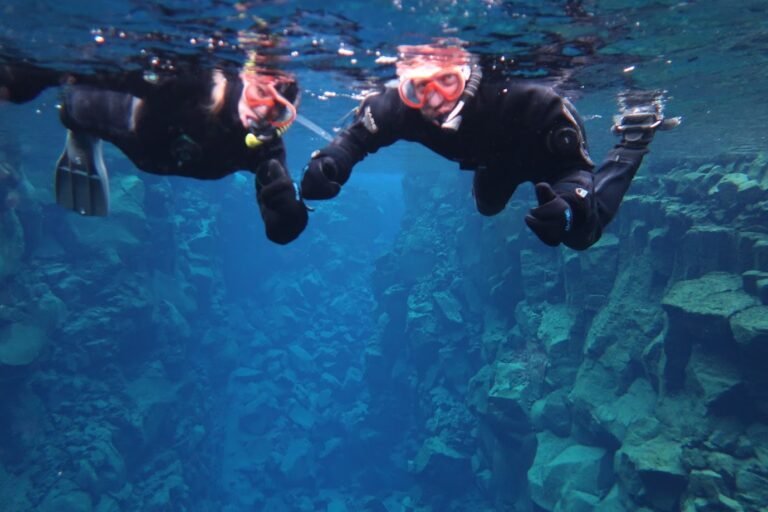
Almannagjá Gorge canyon
After our swim we enjoyed a walk around the park through the Almannagjá Gorge canyon that marks the boundary between the North American and Eurasian tectonic plates, and up to the designated viewing platform that provides some incredible views across the park. In total including our swim, we were here about 3 hours.
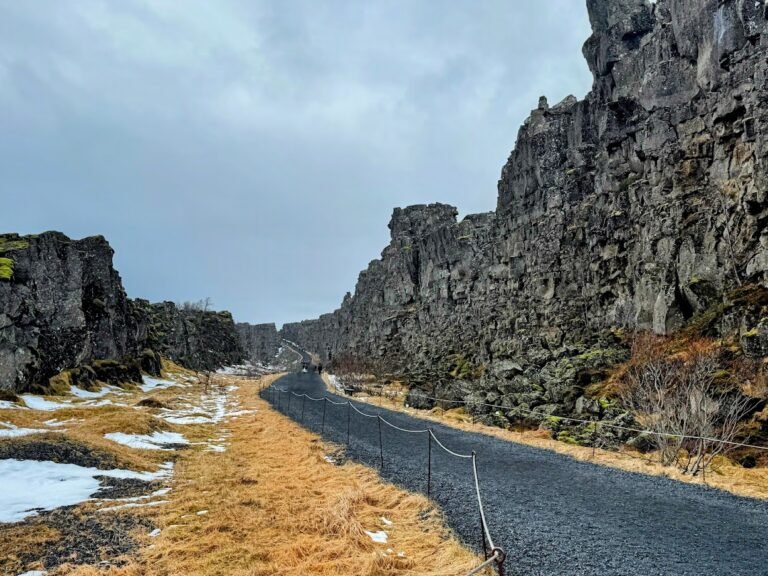
2. Strokkur Geyser
Our next stop was the famous Strokkur geyser. It’s located in the Haukadalur geothermal area and is an active geyser that erupts regularly every 5-10 minutes, shooting hot water up to 20-30 meters (65-100 feet) into the air. There is a well-defined walking path and you’ll walk past some smaller bubbling pools on the way to the main attraction. A large viewing area circles the geyser so there is plenty of room to find a clear spot. We watched it erupt about 4 times in our short visit, which was pretty epic.
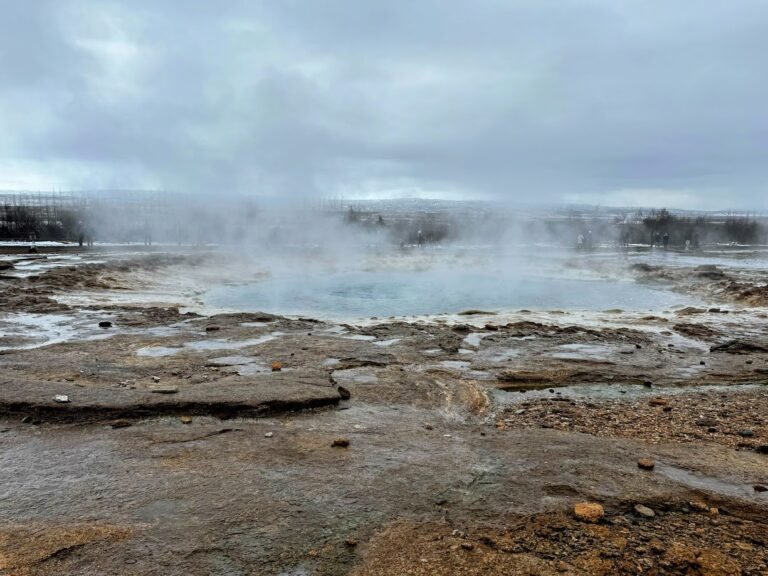
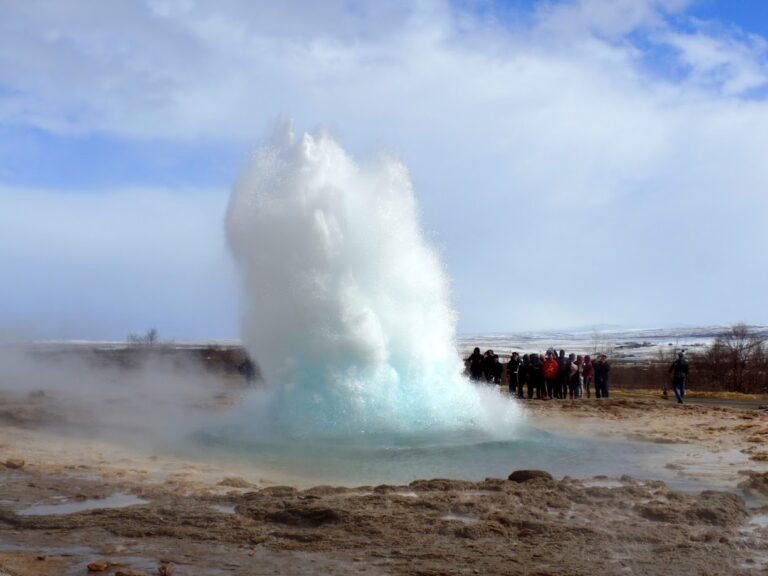
3. Gullfoss
Only a short 6.2 mile drive after the geyser is Gulfoss. There are two parking areas for Gullfoss, but the main one is the 2nd turn in. This was by far the most dramatic waterfall we saw the entire trip. It’s a powerful two-tiered waterfall that plunges into a dramatic 70m (230 ft) deep canyon on the Hvítá River. The waterfall drops a total of 32m (105 ft) in two stages – first 11 m, then 21m. There are two viewing platforms – one at the top, and another at a lower level. I actually thought the views from the bottom level were better. Be prepared to take loads of pictures to capture it’s incredible beauty!
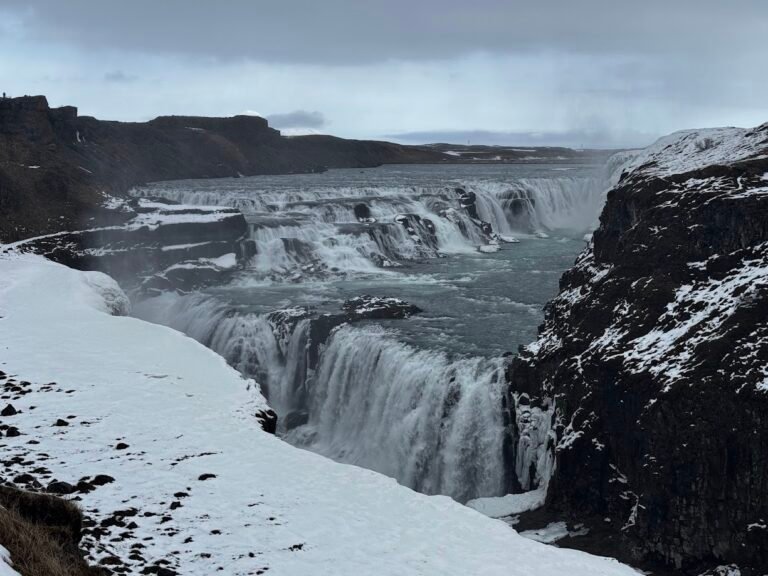
4. Faxafoss
A short 15–20-minute drive from Gulfoss is another waterfall called Faxafoss (also known as Faxi or Vatnsleysufoss). This waterfall is located on the Tungufljót river and was quite the hidden gem. It’s a much smaller waterfall than Gullfoss, but very beautiful and also has the bonus of being very quiet with few visitors.
5. Kerið Crater
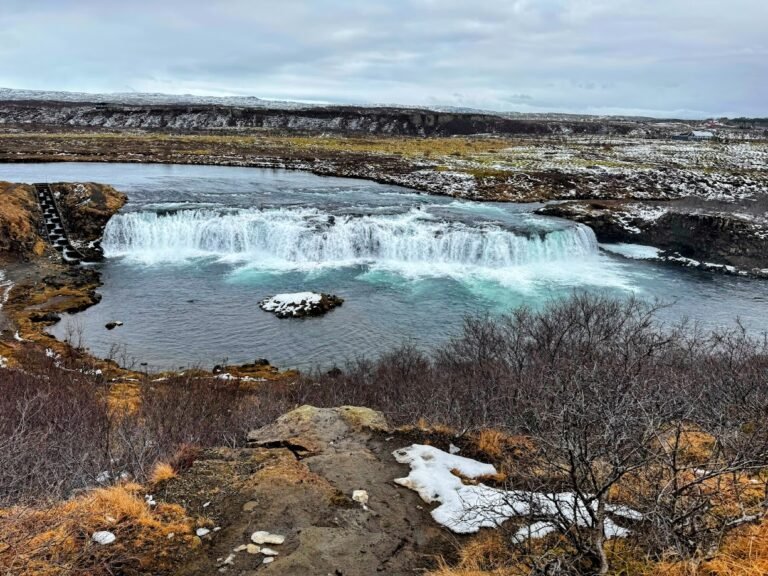
A further 30 min drive and the last stop on our Golden Circle tour was Kerið Crater. This volcanic crater lake is part of the Western Volcanic Zone, and is approximately 3,000 years old, making it relatively young by geological standards. It was formed when a volcanic cone collapsed into its empty magma chamber after an eruption. The crater is about 55 m (180 ft) deep, 170 m (560 ft) wide, and 270 m (890 ft) in circumference. There is a small fee of 600ISK (£3.50) each to walk around. What makes it so beautiful is the incredible contrast of the blue water at the bottom of the lagoon set against the red slopes and green of the surrounding trees and moss.
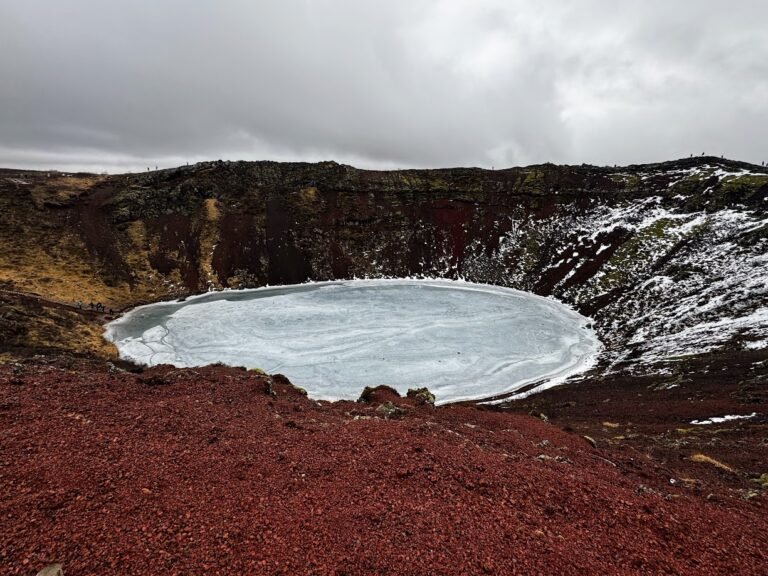
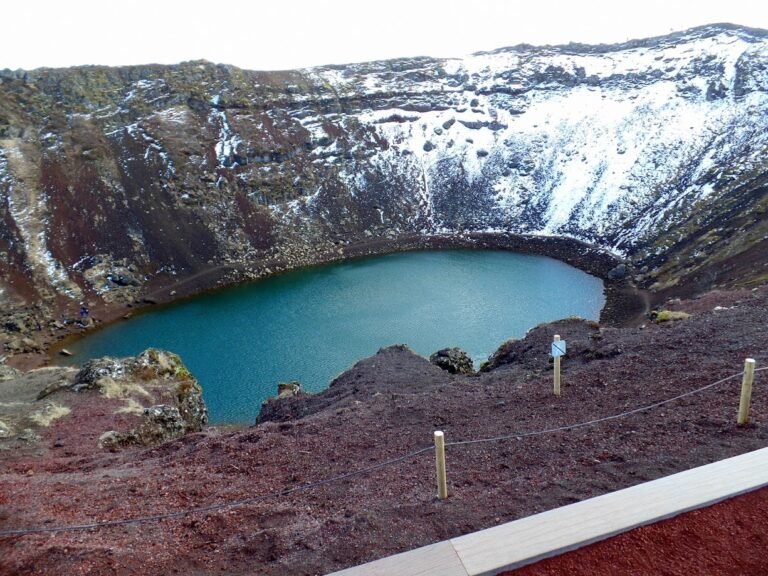
Ring Road sites
The following day we had time to visit a few sites along the south ring road. Staying in Hella made things much more convenient to squeeze all this in.
Seljalandsfoss
As you drive the ring road it’s pretty impossible to miss this long drop waterfall. We arrived at 8:15, and there was just a few people there. The falls drop 60 m (197 feet), and if watching isn’t awesome enough, there are stairs to the right of the falls that will take you to an open cavern behind. You will get wet so bring a raincoat, but seeing the water cascade down with the reflecting morning sun was truly incredible.
There is a path that takes you by smaller waterfalls, ending up at Gljufrabui, which is partially hidden behind a rock face. It’s inside a moss-covered canyon, which you can go in if you don’t mind getting damp in the mist (best to have some good hiking shoes). It’s considered a hidden gem and generally overlooked if you aren’t aware of it.
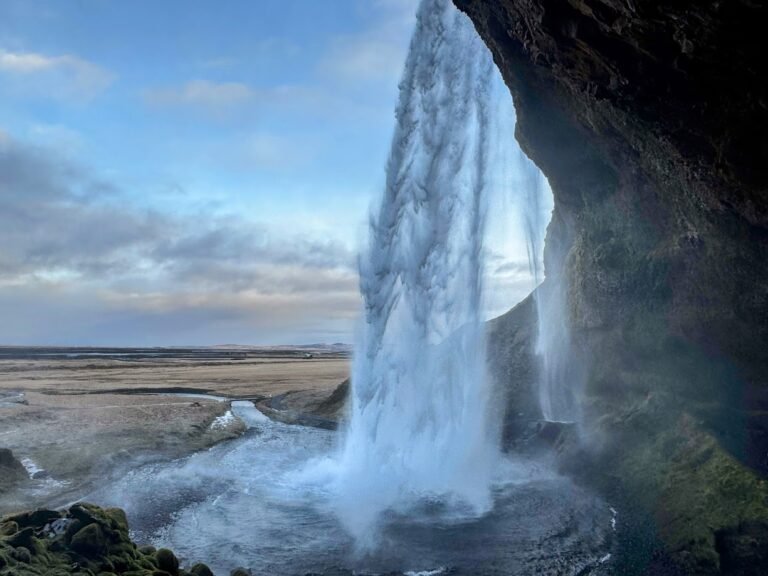
Sólheimajökull
Who doesn’t want to hike a glacier in Iceland, right? Sólheimajökull is an outlet glacier that extends from Mýrdalsjökull, Iceland’s fourth-largest ice cap. The glacier is about 8 km (5 miles) long and 1-2 km wide. We booked a three-hour guided tour with Troll.is, complete with all necessary equipment. Once all geared up (helmet, climbing harness, crampons and ice axe) we walked about 15 mins from the parking lot to the bottom of the glacier. Hard to believe the ice can be so beautiful, but the views of the glacier and the surrounding lake were mesmerizing.
The walk onto the glacier does require some balance and awareness, given you’re walking on ice and near deep crevasses. The guide was very informative, helpful, and patient for all fitness levels. The walk on the glacier lasts a little over an hour and with plenty of stops for photos and taking it all in. If you’re fit and able I would definitely recommend this adventure! Prices are about £84 ($109). You are required to wear hiking boots, not hiking trainers. If you don’t own any, they provide rentals.
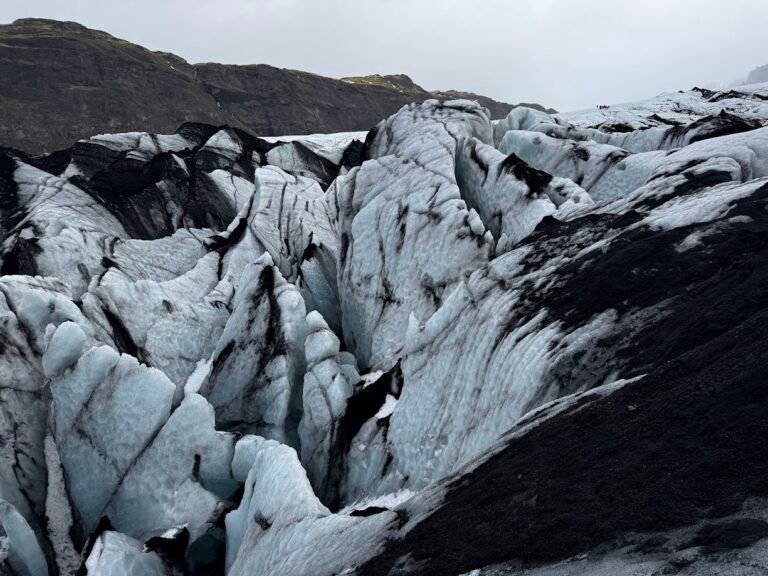
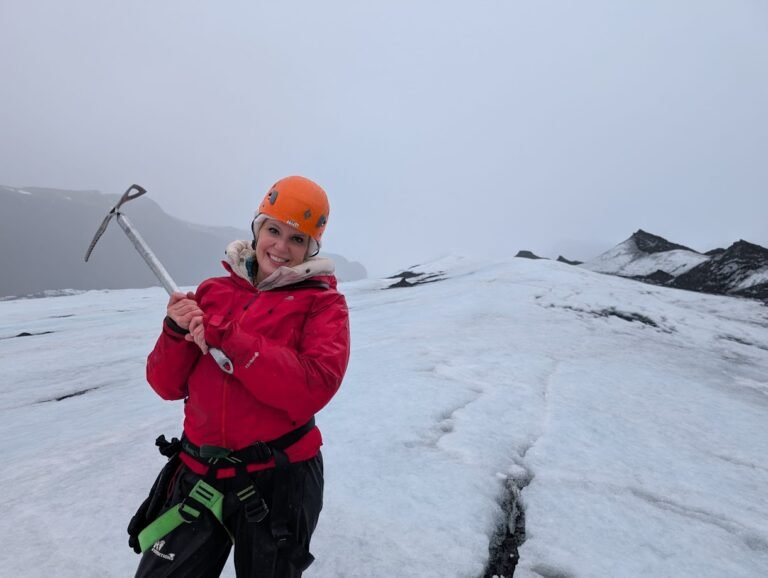
Reynisfjara
After a further 36 minutes drive (32km) you will reach the famous Reynisfjara volcanic black sand beach. It features towering basalt column cliffs along the shore. They are not only a geological marvel, but also provide a great climbing opportunity for some iconic photos.
You may be temped to walk along the beach into the open cavern or close to the water, but sneaker waves are known to happen, and I’ve seen people get unexpectedly caught and hit with a cold wave of water. So be careful if exploring further.
Seen from the beach are several rock formations out in the water, known as the Reynisdrangar sea stacks. Legend has it these were trolls that were petrified when they were caught by the dawn’s sunlight. Trolls are a big part of Iceland folklore and you’ll see them feature in many stories.
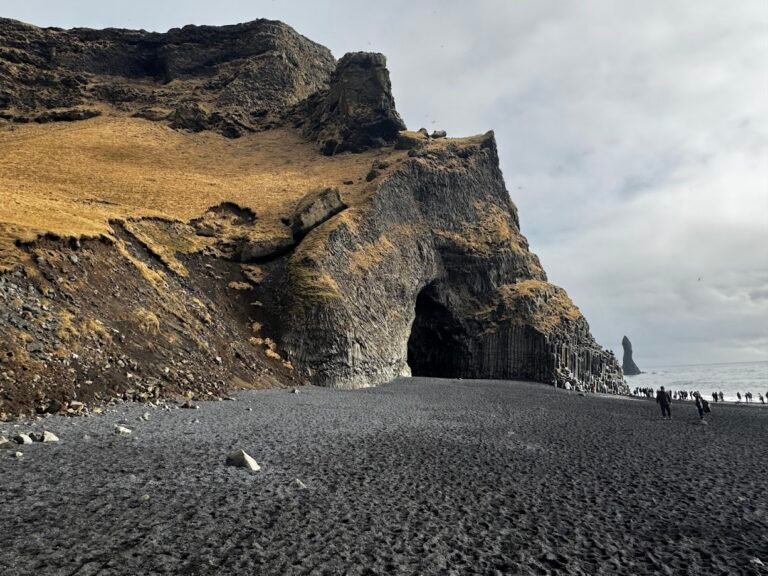
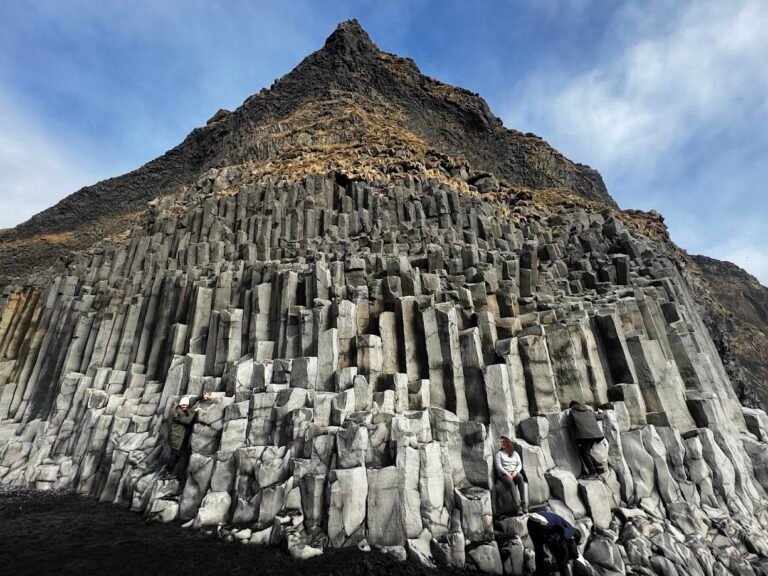
Dyrhólaey Lighthouse
Dyrhólaey Lighthouse is located on the southernmost point of Iceland, about 120 m above sea level. While the lighthouse is pretty, it’s not the selling point for this stop. The name “Dyholaey” means “the island with the door hole” in Icelandic, referring to the large arch in the peninsula that ships can sail through. This large arch can be seen as you walk past the lighthouse towards the cliffs edge. The cliffs here are also home to puffins during breeding season, typically between May and August. Unfortunately we were here mid-March, so we missed these adorable little birds.
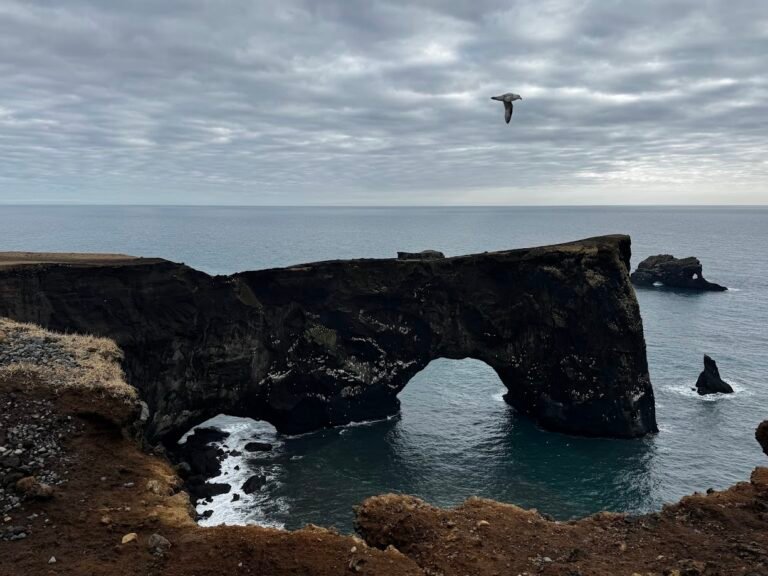
Skógafoss
Skógafoss was our last stop on our adventure filled second day. This was on our way back towards Hella and is located right off the ring road. The waterfall is 60 m (197 ft) high and 25 m (82 ft) wide. You can walk up pretty close to the base of the falls to snap some cool photos and admire the sheer size and beauty.
You will need to carefully cross some stones through a small stream to get closer, so hiking shoes was pretty essential as your feet will get a bit wet. On a sunny day the rays reflect off the water and create these amazing rainbows in the mist.
To the right of the falls is a very tall staircase (527 steps) that leads to a viewing platform at the top of the falls and to the start of the Fimmvörðuháls hiking trail. We hiked a bit of this trail and came across a few other falls, but we were pretty exhausted after a long day and were ready to head back. The climb up is steep and in my opinion the view from the viewing platform is not worth it. So, unless you are interested in hiking a bit after your ascent, I’d say skip this.
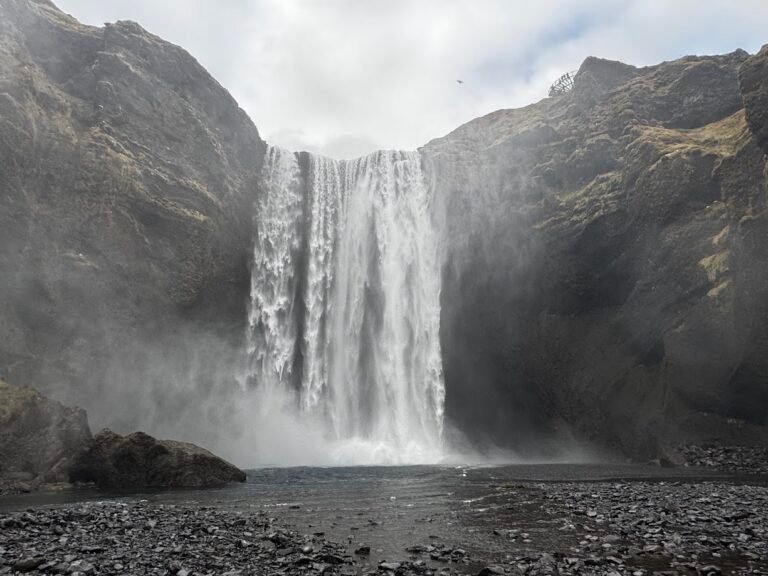
Icelandic horses
Icelandic Horses are this beautiful breed of horse, specific to Iceland, and resilient to the harsh weather conditions found here. They are smaller in stature, but still considered a horse, not a pony. They are kept in large herds on huge pastures of land and roam freely for much of the year. We drove past so many of these beautiful animals along the ring road, and on a few occasions stopped to get out and pet them. They are very friendly and seemed to enjoy the attention they get from people. They made for some of my absolute favourite photos of the entire trip.
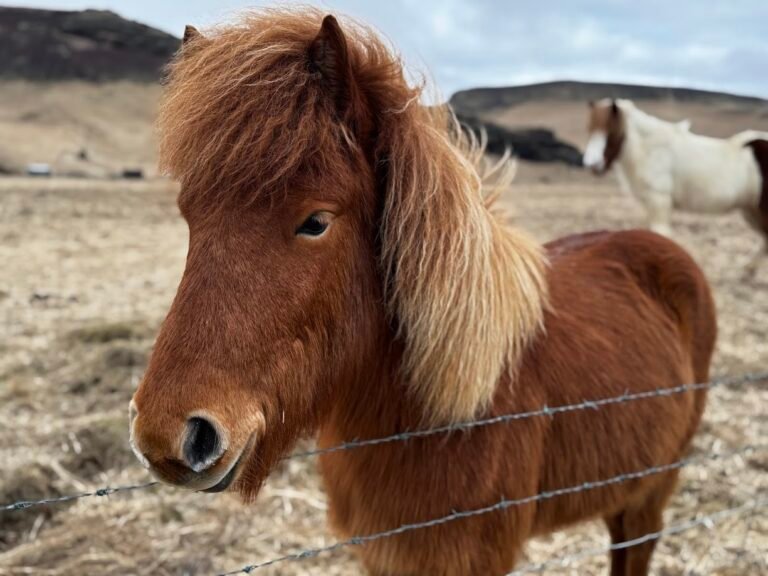
Keldur Turf Houses
Keldur Turf Houses are one of Iceland’s best preserved historical farmsteads and one of the oldest remaining turf house complexes in the country. Located a short drive from Hella, we drove here on our last morning. There is a museum that opens at 10am for a small entrance fee, but we arrived earlier and just walked around ourselves.
The traditional Icelandic architecture featured walls made of stone and turf for insulation and wooden frames. They were designed to keep families warm during the harsh winters. The drive here off the ring road is about 11km, and I would plan on around a 30 minute visit.
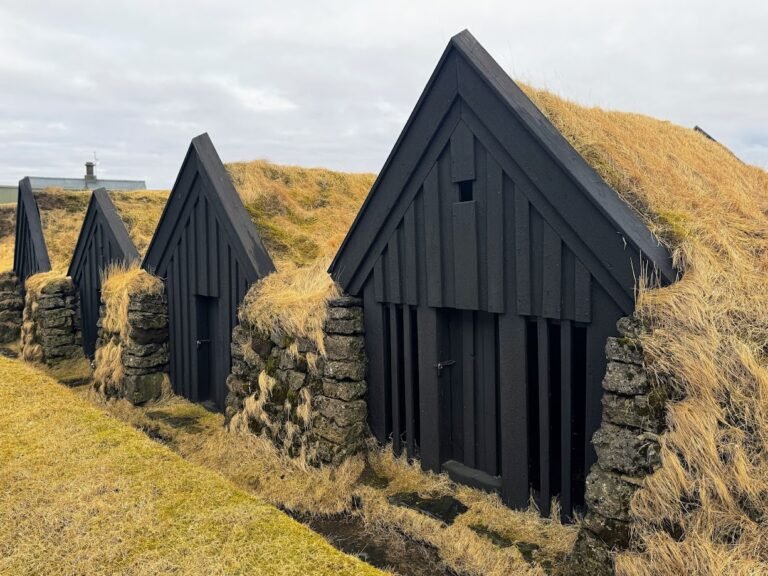
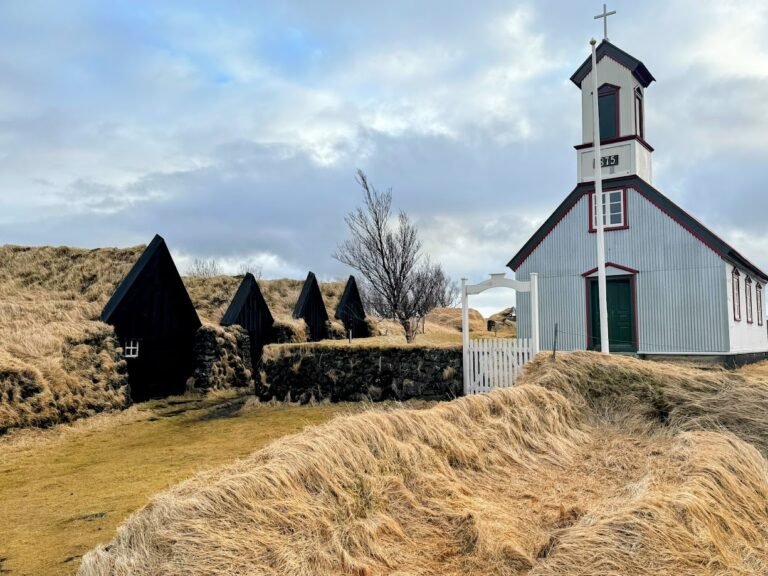
Jökulsárlón
Jökulsárlón is located further north on the ring road approximately a 5 hour drive from Reykjavik. I didn’t visit on this particular trip but made the trek here on my first visit to Iceland. This is a glacial lake filled with icebergs that have broken off an outlet glacier of the Vatnajökull ice cap. It’s about 18 square kilometres and can reach depths of up to 250 m, which makes it Iceland’s deepest lake.
I took a boat tour on this lagoon that navigated around these incredible icebergs taking us up close and personal, as well as tasting some 1000-year-old ice. We even saw some small seals swimming in the waters. The boat tour only lasts about 35 minutes but do take some time to also just walk around the area once the tour is complete. And don’t miss black diamond beach located on the other side of the road, where chunks of these icebergs have made their way to the beach and resemble diamonds (hence its name).
Driving here from Reykjavik takes a long time and on my first visit here we drove here and back in the same day, which made for an insanely long drive. In hindsight it would have been much more enjoyable to break up the trip staying in places along the way. We would have had more time to relax and enjoy our stop without feeling so rushed to get back on the road.
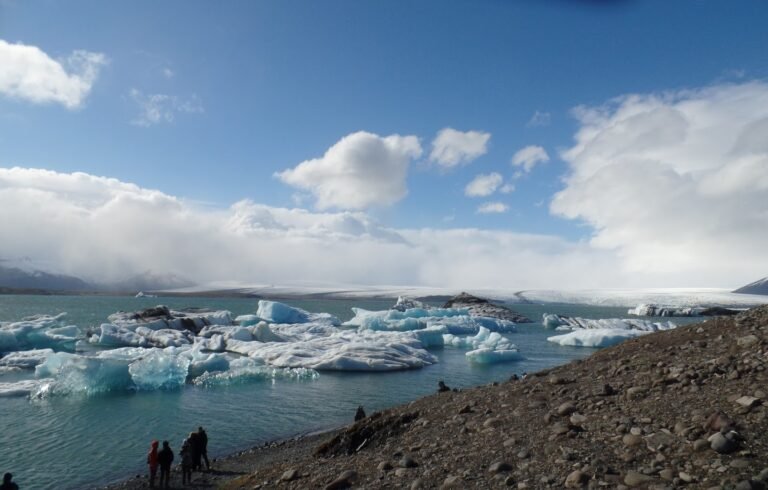
Summary
Wrapping up my second visit to this incredible country, I leave knowing I must come back again. Seeing some of the same places as my first visit, was no less incredible and possibly even better than I had remembered. The landscapes here are truly otherworldly and every visit creates a unique experience. Even in just a weekend you can experience so much of the country’s dramatic scenery, but allow 7-10 days if you want to cover the whole island. I hope my 4 day itinerary offers you some inspiration.
Drop me a comment on my Youtube video if you have any questions.
